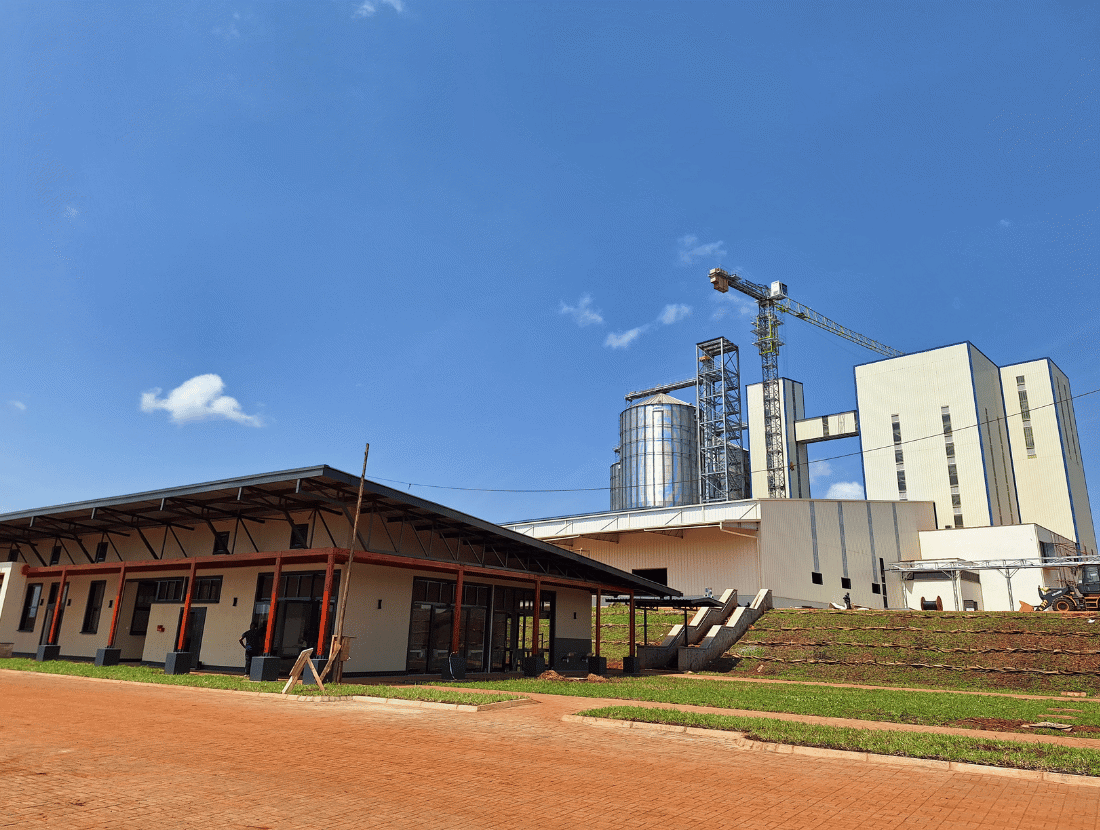Thursday, 13 November 2025

Image Source: De Heus
In an era where agricultural progress is increasingly defined by precision, scale, and sustainability, few companies dare to build across three nations, three markets, and three ecosystems—all within the span of a single quarter. Yet this is precisely what Dutch agribusiness powerhouse De Heus has accomplished. With the simultaneous commissioning of state-of-the-art feed mills in Uganda, India, and Kenya, the company has orchestrated a rare logistical and strategic feat—constructing a transcontinental infrastructure for quality nutrition that is as much about empowering local farmers as it is about reshaping global supply chains.
These feed factories are more than just industrial plants; they are instruments of transformation. In Uganda, where fish comprises a significant share of the national diet and aquaculture is poised for expansion, the company’s facility on the northern shore of Lake Victoria marks a pivotal shift. Previously, the country relied heavily on imported aquafeed—a cost inflation that local producers could ill afford. By localizing production and introducing extruded feed technologies, the factory intends not merely to reduce import dependence, but to inject greater predictability, affordability, and nutrition into Uganda’s aquatic value chain.
In Kenya, the company’s investment unfolds against the backdrop of a government prioritizing agriculture and nutrition security. Here, in Athi River near Nairobi, De Heus has established a dedicated animal feed facility serving poultry, swine, and ruminant segments. Amid mounting concerns over feed adulteration and inconsistent quality, the plant promises a new benchmark in food safety and performance assurance. The facility is undergirded by strict testing protocols and its own in-house laboratory—a stark departure from practices where lab oversight is optional, and sometimes absent.
India, a more mature yet still fragmented market, presents a different challenge. De Heus has already operated through rental feed mills, but the new greenfield facility in Rajpura, Punjab, signals a strategic pivot. It consolidates the company’s operations into a centralized, high-efficiency model—anchored in long-term trust in the Indian market. The factory will serve the country’s vast ruminant, poultry, and swine segments, but its implications extend beyond feed tonnage. It represents a recalibration of quality control, production stability, and ultimately, farm-level productivity.
What unites all three operations is not only a shared corporate ethos, but a deliberate choice of cutting-edge engineering over convenience. The machinery deployed across these factories—imported from Europe and Asia—was selected not on the basis of cost, but consistency. In Uganda, for instance, where horizontal dryers might have sufficed, De Heus opted for vertical dryers, banking on superior outcomes honed through years of operating aqua plants across the globe. That the company designs its own production processes in-house, through a Group CAPEX team, underscores a larger truth: it does not outsource competitive advantage.
But building across three countries with different regulations, workforces, and infrastructural constraints is no small undertaking. The realities on the ground were often discordant with global expectations. Local construction workers, unfamiliar with Western standards of industrial safety, had to be trained and retrained. Attitudes toward site finishing and hygiene required gentle correction. Equipment had to be imported from half a world away, through congested ports and erratic customs regimes. Yet, despite such formidable odds, the factories—some starting from “nothing” but a blueprint—rose to completion.
De Heus’ approach to localisation is no superficial gesture. Beyond direct employment, the factories generate a web of indirect livelihoods—technicians, electricians, hauliers, cleaners, and meal providers. Welfare blocks, replete with professional kitchens and air-conditioned break areas, elevate the employee experience beyond transactional labour. And post-commissioning, the plants will remain woven into the wider De Heus operational network, receiving support from colleagues in Vietnam, the Netherlands, and fellow African BUs like Ghana, Ethiopia, and Côte d’Ivoire. It is not just globalisation; it is institutional osmosis—the transfer of knowledge, culture, and precision engineering across borders.
The feed sector has long grappled with the twin demons of nutritional inconsistency and volatile supply chains. In much of Africa and South Asia, the promise of higher yields is often undone by compromised inputs. De Heus’ model—rooted in laboratory-rigour, automation, and modular plant architecture—seeks to reverse this cycle. By delivering feed that is not only nutritionally accurate but also traceable and replicable, the company offers something radical: trust.
There is, of course, more at stake than business margins. At a time when food security is increasingly threatened by climate shocks, population growth, and geopolitical turmoil, the ability to stabilize and scale quality feed production has cascading benefits. Healthier animals mean better food conversion ratios, reduced antibiotic dependency, and more resilient farm economics. For nations wrestling with malnutrition and rural underemployment, the dividends are not merely agricultural—they are social.
In stitching together Uganda, India, and Kenya through a common infrastructural thread, De Heus has not just built three factories; it has mapped out a replicable template for 21st-century agri-industrial expansion. One that respects the contours of local need, yet never compromises on technical sophistication. In the annals of agricultural innovation, such tri-continental orchestration—executed within months, across unfamiliar terrain—deserves more than quiet commendation. It signals the arrival of a new idiom in feed manufacturing: where precision meets purpose, and geography is no barrier to excellence.